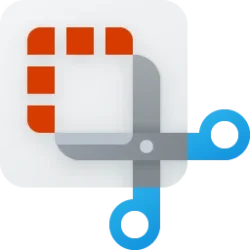@Scannerman
The data is what I want. The physical drives are meaningless to me, the only thing I want is access to that data, accumulated over a decade, on my windows 11 machine. I'll just buy a new drive if I want a new blank windows 11 drive. Any response that is not about recovering that data is not useful to me. Any advice that destroys that data is less than useful to me as that is actively harmful to what I am trying to accomplish.
This is why I suggested getting a licensed data recovery app. I recommend
MiniTool Partition Wizard Pro Ultimate because I'm familiar with it but I'm sure there are other good ones available as well. Of course it depends on how valuable that data is to you but doing it yourself instead of paying Seagate or some company to do it for you might be worth it. Plus you'll have a set of very handy tools to use in the future.
Drive 1: Does not show in Explorer, Does Show in devices, Disk management shows as wiped -- sadly that explains everything for this one but then I have a new issue as someone wiped my drive which is aggravating. But that is a human issue instead of a Windows 11 issue. [THIS DRIVE IS SOLVED]
If you have an abundance of various desk tops as I do you could try to see if the drives that fail to show anything might show data in them. Since you're a Linux user I will presume that you know how to strip data off drives. Again, a software recovery app might just be the thing in this case.
Drive 2: Does show in Explorer, Does Show in devices, Disk management shows two partitions with one EFI boot partition, the other "Healthy (Primary Partition." That EFI system partition is weird and crazy because that was just a backup drive, where did that extra partition come from. Same make as Drive 4
If this drive shows in
Disk Management you should have no problem extracting the files simply by opening it in
Disk Management and dragging and dropping, or copy and pasting the files to wherever you want them to be. You can always confirm how much data is on this drive by checking the properties. So this drive should also be marked as "Solved" because you can access it in all three areas of concern. Evidently it was formatted to be a boot drive for an OS at some point. How that came to be is an entirely different issue and not relevant to what we are addressing here. Unless the partitions are deleted and the drive is re-formatted those EFI boot partitions are likely to remain.
Drive 3: Does not show in explorer, Does Show in devices, Disk management says "Healthy (Active, Primary Partition)" for one large partition that fills the space. Same make as Drive 5
If you can't give your drive a drive letter then either the drive is not formatted to work in Windows (meaning it is formatted for Linux or some other OS) or, you already used up all your dive letters (like I did once) and I doubt that this is the case. Or, the drive needs to be initialized, which thing would be stated to you in
Disk Management. Apart from these three options the drive might be defective but I kind of sort of doubt it. I think that
Drive 3 is an "other OS" drive incorrectly formatted for an other OS such as Linux. Such drives can even have EFI boot partitions on them but they will not boot to much in Windows. This could be the result of an attempt at a dual boot configuration that went sideways. Who knows? The important thing is the data and this data looks like it can be stripped to another drive on Linux. So not all is lost. If you want to use the drive properly in Windows you need to delete the partitions and format it in Windows. Why risk corruption?
Dive 4: Does not show in Explorer, Does Show in devices, Disk management shows two partitions with one EFI boot partition,the other "Healthy (Primary Partition." That EFI system partition is weird and crazy because that was just a data backup drive, where did that extra partition come from? Same make as Drive 2 ... so apparently having that EFI boot partition doesn't help.
Dive 4 took a dive because that is what they do when the first partition is a Windows EFI partition. They defer to your Windows OS and let Windows do it's thing. See if you can salvage your data and reformat the drive afterward for Windows if you plan to use it in Windows. If you don't plan on using it in Windows then leave it for Linux and play with it there. Windows Explorer works with drives formatted for Windows.
Drive 5: Does show in Explorer, Does Show in devices, Disk management shows one partition with the no name as "Healthy (Primary Partition." Same make as Drive 3
If a partition is formatted for Windows it will show in Windows Explorer. This is the reason you can run both Linux and Windows on the same drive. Personally, I don't advise doing it but it can be done. Of course, if the data is already corrupt you may experience different results. All these drives show in
Disk Management. I'm guessing the drive that didn't show in
Device manager is the drive that needed to be initialized but when data is corrupt all bets are off.
Conclusion:
If you like to play around with drives (like I do) I highly recommend getting some extensive recovery software. I especially recommend
MiniTool Partition Wizard Pro or,
Pro Ultimate if they still have it. This sort of software does so much more than recover lost data. It can be very useful for modifying drives, altering partitions, moving partitions where you want them, resizing partitions, modifying allocation tables, and much much more. There is a chance that you have just enough data corruption going to give yourself a mild headache. If you're a dual booter like me I wish you the very best as I'm still fighting Win 11 with this as Win 11 appears to be hogging the kernel all to itself (as usual) no matter what approach I use. Sooner or later my Linux always gets killed.
I am assuming of course that none of these drives uses your current working
Windows 11 OS. Better to unplug them all and work with one at a time. Forgive me if I have overstated the obvious. I'm no mind reader and you don't strike me as a novice. Here's to wishing you the best success and I hope at least some of this helps.





